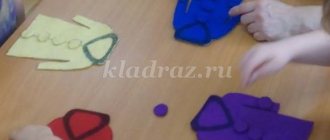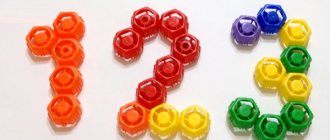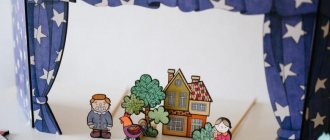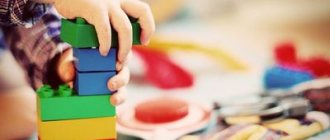Typical speech disorders in children 5-6 years old
Most older preschoolers have difficulties with:
- mastering sonorous and hissing sounds;
- sound analysis of words;
- development of narrative speech;
- writing a story and descriptions.
Of course, such problems can be minor, only slightly different from the age norm, or serious, up to and including general speech underdevelopment (GSD). It is necessary to contact a speech therapist in any case, but the supportive work of parents at home is also very important.
It is worth noting that regular speech therapy exercises and classes for children 5-6 years old are useful for every child at home, because they help to master literacy faster.
Rules for speech therapy classes at home
The success of home lessons depends not only on the availability of the necessary aids and a work plan agreed upon with the speech therapist. The organization of classes itself is very important. Here are a few simple rules that will help you achieve excellent results:
- All speech therapy exercises for children should be carried out regularly, but a little at a time. You shouldn’t try to do articulation gymnastics, play speech games, or fill out a workbook right away. It is better to devote a few minutes to each type of exercise, rather than having a whole “speech therapy day.”
- Do not force them to complete tasks under pressure; educational activities for children should resemble a game. Come up with a simple plot (for example, a journey into the universe of sounds), prepare small prizes (stickers, paper stars), and arrange physical exercises.
- Praise and support the little student if he makes even the slightest progress. Focus on achievements, even small ones, gradually progress will become more and more obvious.
- Find good workbooks for home practice. They should not only be professional in content, but also bright, colorful, and exciting. It is ideal if the tasks have interactive elements (the opportunity to add something, draw something). Such material makes it possible to interest a preschooler and clearly shows him the “path traveled” and success.
- Don't expect instant results, be patient and gentle perseverance. The process of setting, consolidating, and differentiating sounds is complex; it takes months even for experienced speech therapists. Follow the plan and the results will gradually appear.
Speech therapy exercises for practicing at home
All speech therapy exercises can be divided into three large blocks, each of which needs to be given attention and carried out regularly:
Development of phonemic hearing
The ability to distinguish sounds by ear seems natural, but if you ask your preschooler to spell a word, you will see gaps.
For children 5-6 years old, there are a large number of special games and exercises that help develop phonemic hearing. These include:
- selection of words starting or ending with a given sound;
- counting sounds in a word, determining the syllable structure;
- drawing up a sound diagram of a word;
- inventing rhymes and short poems;
- pronouncing speeches and tongue twisters.
Thoughtful speech therapy classes for children 5-6 years old make it possible to make all the sounds of their native language obedient and easy.
Finger gymnastics
Fine motor skills of the hands help speech activity, so older preschoolers must do it without fail.
Of course, for children 5-6 years old, the exercises should be complex, with a script, in verse. It is useful to select sets of exercises for both hands at the same time, synchronous. Don't forget to use "helpers":
- small massagers (rubber balls, rollers, cones);
- scissors for cutting;
- plasticine;
- origami paper.
Also remember that all types of needlework, construction, and any creativity are great ways to improve fine motor skills outside of individual lessons.
Articulation gymnastics
Special language exercises must be performed every day if there are any problems with pronunciation. For home exercises, it is best to choose a set of exercises with a poetic description and pictures.
Do a tongue warm-up every day, always in front of a mirror (this allows the baby to observe the process himself, assessing its success). If you have problems with one or two sounds, then articulatory gymnastics should be selected for them. These can be found in thematic workbooks on speech therapy.
Speech therapy exercises for preschoolers.
57 exercises for starting speech in babies
Let's look at specific exercises that help launch
speech and improve sound pronunciation.
At an early age, speech is characterized by a rather poor vocabulary, the use of simplified words, and the absence or distortion of individual sounds.
The reason is an underdeveloped speech apparatus due to age and weak speech exhalation.
To solve most of these problems, there is a large arsenal of developmental exercises, games and techniques.
Breathing game exercises aimed at training speech exhalation
- We blow on pieces of paper napkin, cotton wool, through a straw into water - we blow bubbles
- We blow out the candles - of course, under the strict supervision of adults
- We make aids on strings - paper butterflies, clouds, snowflakes, and blow on them
- We launch boats with paper sails from plastic cups into a bowl of water and blow into the sails
- We show the “breeze” - we blow on each other
- Blowing feathers and ping pong balls off the surface
- We blow through a straw into a bottle covered with a lid with foam balls.
Articulation exercises for the development and strengthening of the speech apparatus
- Games with different sounds: clicking like a horse, sniffling like a hedgehog, smacking - kissing
- Developing articulatory muscles:
- Blow the bubble with your cheeks and burst it with your palms
- We show our tongue - we tease / the tongue peeked out of the mouth and hid back
- We show our teeth - “ Who has teeth?!”
- “Lapping milk” like a cat.
- Onomatopoeia with repetitions is useful to do at different tempos:
How does the car sound?
Beep beep! How does a cow moo? Moo-moo-moo! How does the drum beat? Ta-ta-ta! How does mom sing a song? La-la-la! How does a chicken peck grain? Kluk-klu-klu! How does the pipe play?
Doo-doo-doo! Musical games that stimulate speech production
When children sing sounds, syllables and words, it is easier for them to speak.
- Games using children's musical instruments, where sounds are duplicated with words:
Knock-Knock!
(Claves, spoons, drum)
La-la-la!
(Metallophone)
Ding-ding!
(Bell)
Like, drip, drip!
(Triangle)
Boom-boom-boom!
(Tambourine)
2. Songs-onomatopoeia “Grandmother Natalya had 7 ducklings”, “Geese-geese”, “We have a horse Igogoshka”, “Kva-kva, that’s what the frog says.”
3. Song articulation warm-ups by E. Zheleznova “And we’ll say it together with mom,” “Come on, repeat it.”
4. Tapping simple words and names on a tambourine.
5. Games with sequential transmission of musical instruments in a circle “ON!” "GIVE!".
6. Dancing with simple words duplicating movements:
- Top-top;
- Clap clap;
- Jump-jump;
- Beep beep
(Press the spout)
- Back and forth
(Rotations of the body)
- Up down
(Handles with bells or plumes)
Effective games with didactic material that increase passive vocabulary
- Hide toys under a scarf
- GIVE! (According to the teacher’s instructions, the child gives a toy of a given color, shape or size)
- SHOW! (The teacher introduces a new concept by showing it in a picture, then the children, following the teacher’s instructions, look for the demonstrated item on their handout sheets and point with their finger or cover with their palm)
- Sorting by color, shape or size (For example, we collect red balls for Bear, and yellow balls for Bunny).
- We look for hidden figures in the sensory basin (animals, toys, dishes, gossips of different colors) - the child finds it, the adult names it.
Finger massage and finger games
Many teachers like to say: “Speech is at your fingertips!”
In the seventies of the 20th century, physiologist Marionella Maksimovna Koltsova conducted research in an orphanage. She proved that in the experimental group of children with whom exercises were carried out to develop fine motor skills, speech development was significantly higher than in children with whom such classes were not carried out.
This is true, but only partly. Most modern neurologists and speech therapists are inclined to think that it was not the exercises themselves that were the determining factor in the development of speech, but the direct communication of the teacher with the children contributed to the development of speech in the children under study.
In addition, the speech centers, which are located in close proximity to the motor centers in the brain, mature by 3-4 years. Therefore, it is not worth stimulating them, hoping only for the development of fine motor skills at an early age.
However, developing the muscles of the fingers with the help of a gentle massage (“Ladushki”, “Magpie-Crow”), as well as training dexterity through simple movements is useful and necessary.
As I described in the previous article, children with speech disorders often experience poor coordination of movements, muscle tension, and motor clumsiness. Exercises accompanied by rhythmic poetry or singing, relaxation and vice versa movements with fingers help prepare the child for motor planning, train muscle tone, and help the child experience an emotional response in the exercises.
Games for the development of auditory perception
Undeveloped auditory perception affects speech development. The child is not able to listen and hear carefully and with concentration and, accordingly, does not reproduce sounds well. If a child distinguishes non-speech sounds well, phonemic hearing (the ability to distinguish speech sounds) will develop automatically.
Games for the development of auditory perception:
- Guess what it sounds like.
- Zhmurki
- Which hand did it sound in?
- Fast slow
- Loud quiet
- Right-left (after 2 years)
- If a tambourine sounds, we jump, if it’s a triangle, we clap our hands (as an example)
Delicious games
- Lick your lips - jam, honey
- Stick out your tongue - take a berry or candy, and put the berry/candy in your mouth on the tongue
- We lick a lollipop or a cockerel on a stick - reach for it with the tongue up, down, right, left
- Dip the tip of the tongue into sugar or decorative sweet sprinkles and try, according to the instructions, to bring it to the mouth, the inside of the cheeks, and the palate
- Roll a cherry or a round jelly bean inside your mouth
- We pull the gummy worms with our teeth, and use our sponges to collect the worm in our mouth.
- Use your tongue to trace different paths on a tray with powdered sugar.
- We take out the pre-stuck pieces of sweet sticks from an apple or orange.
Training "conscious motor planning"
Motor planning is the ability to imagine, organize and carry out a sequence of unusual
actions.
Most children with language impairment have motor planning deficits.
The process of sound pronunciation requires complex motor planning from the child. The child must consciously control the movements of the articulatory apparatus until the pronunciation of certain sounds becomes a skill.
What is needed to develop motor planning skills?
- Regularity of classes
- Novelty and elaboration of those movements that are not yet automated
- Carrying out tasks according to instructions.
For effective training of motor planning, it is necessary to include in each developmental lesson exercises with unusual motor actions that are not automated in children and are performed according to the instructions of the teacher.
For example:
- Sorting, but not with fingers, as usual, but with tweezers, or spoons or other objects that help to grasp
- Using two hands at once.
- Using your NON-DOMINANT HAND to complete a task.
- Work according to the instructions of a teacher or an adult (first a red bead, then a yellow bead, etc.).
- Motor exercises are demonstrated, not memorized and performed many times.
- Replacing familiar movements with new ones and changing the tempo and rhythm.
- Any tasks using new tools, materials, tasks.
Thus, motor planning links an idea and its motor execution. Motor planning requires voluntary attention and motor dexterity.
Speech therapy tasks
Starting with the letter R
One of the most difficult sounds to master is R. Many preschoolers learn to roar loudly by the very end of kindergarten. If the production of the sound P is already behind you, then special exercises will help speed up its automation:
1. “Like a little motor”
We ask the child to pronounce the sound R in the word for a long time, drawlingly (like a motor growls).
2. “Where is R hiding?” (in pictures and words)
Offer to choose pictures with images of objects with a given sound or clap your hands if he hears such a word.
3. “How can you growl?”
Show your child pictures of objects that have the sound r in their names. Offer to read and color the picture.
4. “Sounding tracks”
Together with your child, come up with several chants made up of several syllables:
Ra-ra-ra - they ran away from the yard.
Ro-ro-ro - and they found a bucket.
Ru-ru-ru - we came up with a game.
5. “Substitute a syllable”
The adult offers the child words that end or begin with a syllable with P (ra, ro, ry), the child must choose the correct option and pronounce it correctly.
6. “Look and name”
An adult asks the child to read words with the letter r from the pictures. The word must be said as many times as there are stars next to each picture.
7. “Poems, tongue twisters, riddles”
Learn with your child several poems and riddles in which words with R appear.
The necessary tasks for speech development can be found in the Workbook for the sound R, compiled by Kostyuk A.V.
Download, print the tasks in pictures and study at home:
Speech therapy tasks for the letter P
Starting with the letter L
The hard sound L is also often difficult for children 5-6 years old. If the baby has already learned to pronounce it alone, in isolation, then it’s time to start working on automation in speech. The following exercises are suitable for this:
1. “Say it nicely”
Offer your child several images of words starting with L. Ask him to pronounce the words beautifully, emphasizing the desired sound with his voice.
2. “Toys for Larisa”
Ask your child to collect gifts for the Larisa doll. Tell her that she only likes things that begin with L. For this exercise, you need to select small objects or pictures in advance; all words should not begin only with L.
3. “One-many”
Invite your child to name words with L in the singular and plural. In the workbook for the sound L (author Kostyuk A.V.) there is a whole table with pictures for this exercise (lesson 20).
4. “Find the Sound”
Invite your child to draw up a diagram of the word and mark the place L on it. If it is still difficult for your child to independently determine the number of sounds, then first you can do several similar exercises from the workbook.
5. “Tongue twisters and nursery rhymes”
Use nursery rhymes, tongue twisters and poems with words that contain L.
Download and print tasks in pictures starting with the letter L:
Speech therapy tasks for the letter L
Individual correctional classes for preschoolers
For various reasons, the process of developing full pronunciation slows down for many children. Pronunciation defects will not be eliminated on their own; to eliminate them, you need systematic exercises with a specialist, as well as joint individual lessons at home.
A well-designed training system will definitely help. Individual speech therapy classes are conducted only after consultation and examination.
Speech therapy in the form of a game
General tips for practicing at home
After a detailed diagnosis of the speech of a preschool educational institution student, it is necessary to carry out correction and begin to engage in speech therapy tasks for children. Class time should not be more than 20 minutes. According to the theory of speech therapy, if you study more than you should, the material will not be fully absorbed.
In addition, speech therapists advise practicing while playing, since play is the main activity in the preschool period.
Note! Any speech therapy classes for correcting the pronunciation of sounds are built in the form of a game.
How to build a lesson
The child will learn the material better and will not get tired at all if the tasks are in the form of a game. In addition, when working with a kindergarten student at home, it is important to structure the process correctly:
- You need to start the exercises with 3 minutes, carefully increasing the exercise time to 20 minutes.
- Organize lessons correctly so that the child has a sincere desire to study.
- It is forbidden to force you to exercise - there will be no positive results from such exercises.
- You need to exercise often, but not for long.
- Do not criticize the child for failures (an important condition), do not shout, and treat with understanding.
Speech therapy rhymes and nursery rhymes during a lesson in the senior group
We need to analyze any situation, find the reason why it doesn’t work out, and try to solve it together. There are many types of speech therapy exercises. For example, the online editorial office of Shakhovskaya and Volkova offers activities and games.










